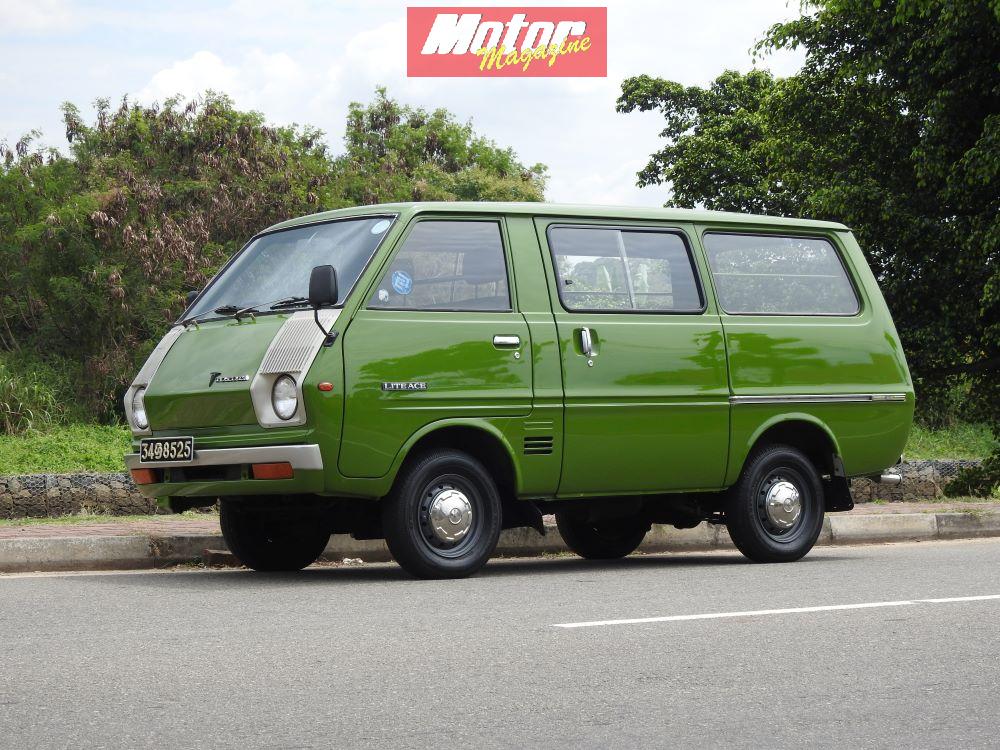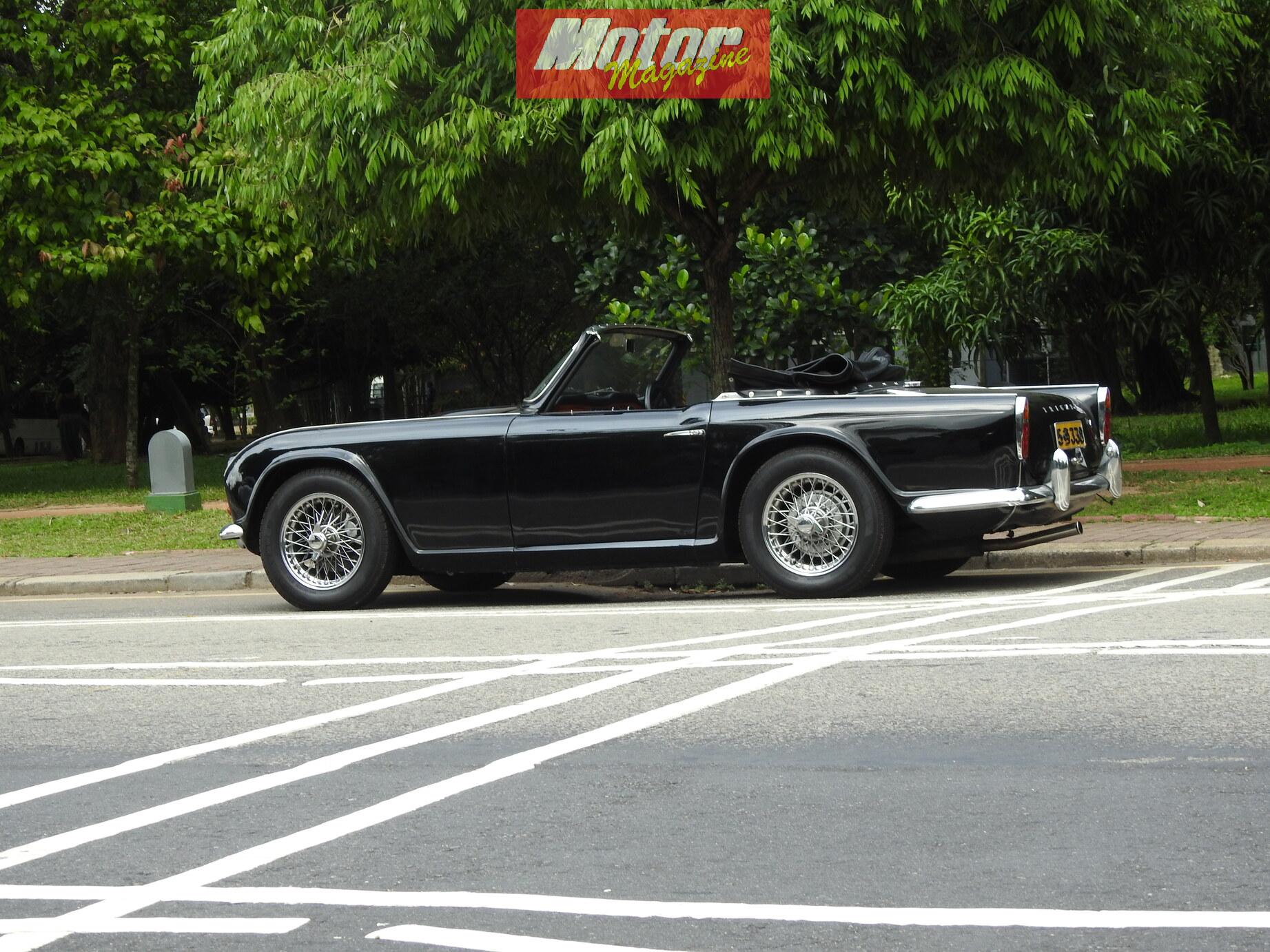
Anyone who has driven a Triumph always seems to have a grin on their face when steering these diminutive British roadsters with their perky engines and rorty engine notes. Triumph is a well-known name in Sri Lanka; our parents and grandparents definitely remember them by sight alone. Sadly, the Triumph Motor Company is no more, so we’ve only got classics like this Triumph TR4 to remember them by.
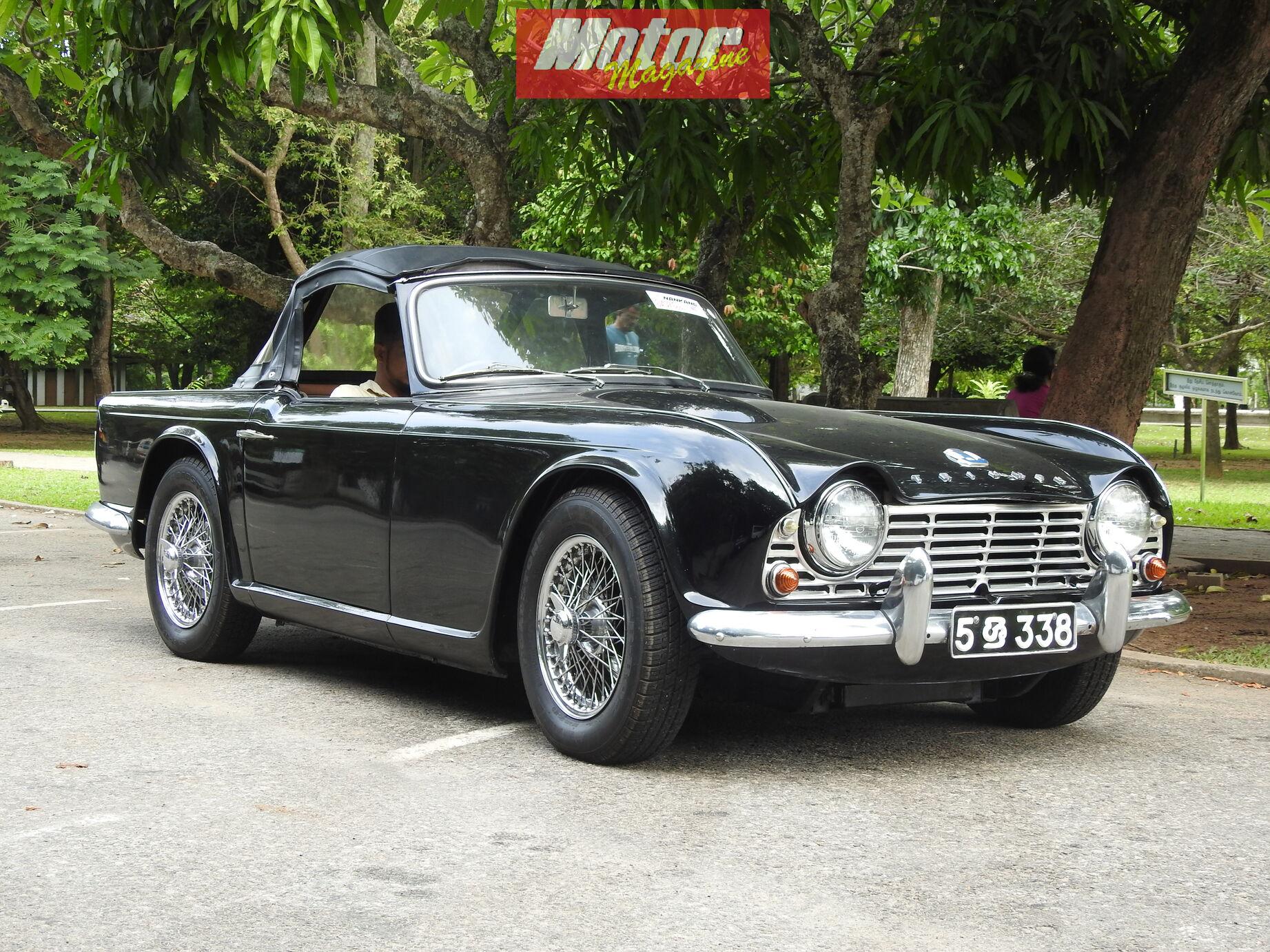
The TR4 was produced in 1961, as the successor of the TR3A. A compact little two-seat sports car, it sits under 4 meters long, less than 1.5 meters wide, and weighs less than the 1,000-kilogram milestone. Powered by a 2.2-litre in-line 4-cylinder engine, the TR4 was manufacturer rated to develop 105hp; and hit 100km/h in under 11 seconds.
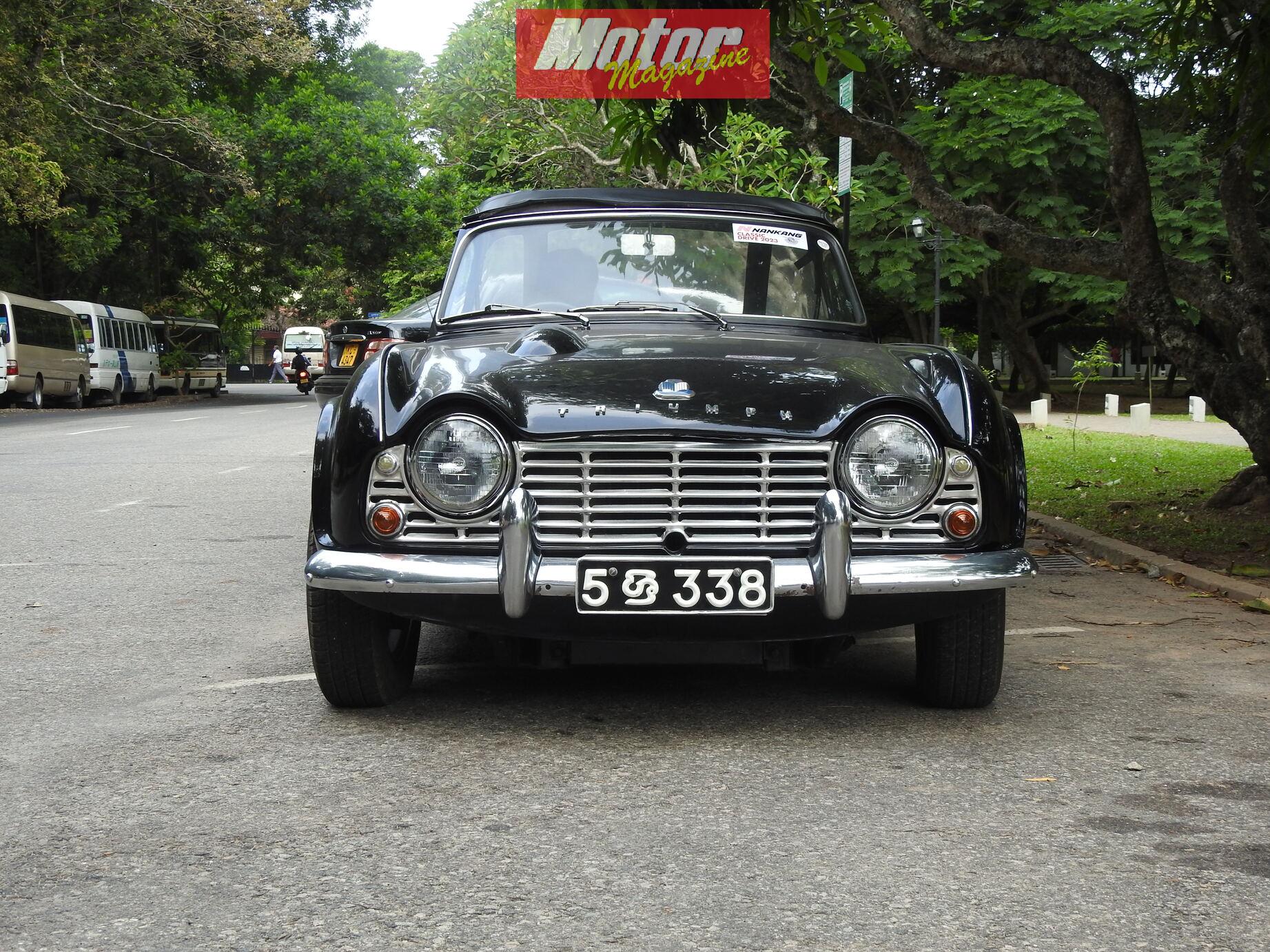
Triumph proudly quoted the top speed as 110mph, which must have been quite the experience in those days. Braking is via discs at the front (TR’s were one of the earliest cars to have disc brakes) and drums at the rear. Rack-and-pinion steering was fitted, and the TR4 came with full synchromesh on all four forward gears.
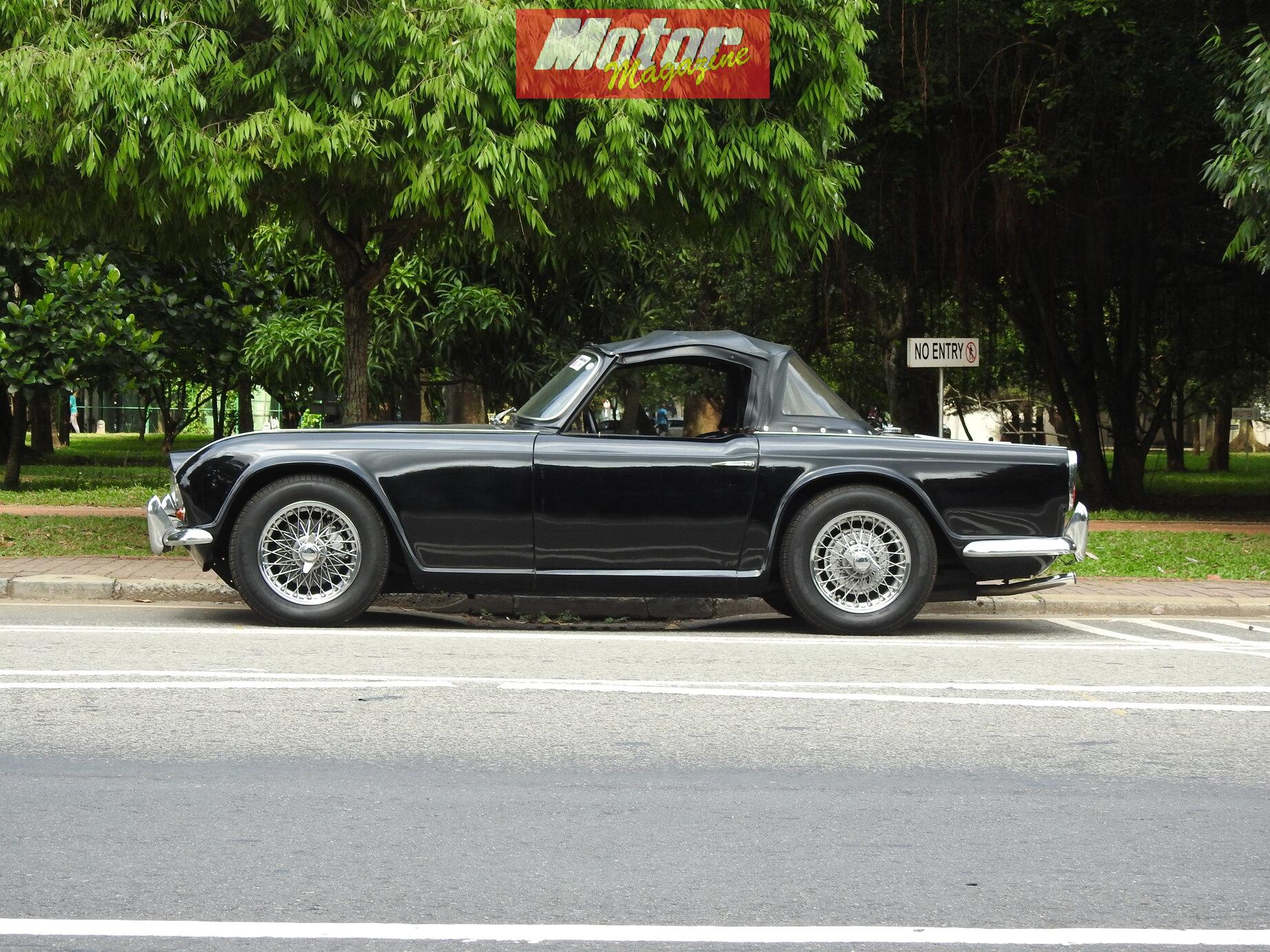
This fine example has just been acquired by a collector after it was sold on by another prominent motoring personality. That explains why 5 Sri 338 looks in stunning condition. Dressed in a straight black paint job, the car attracted much attention from passers-by.
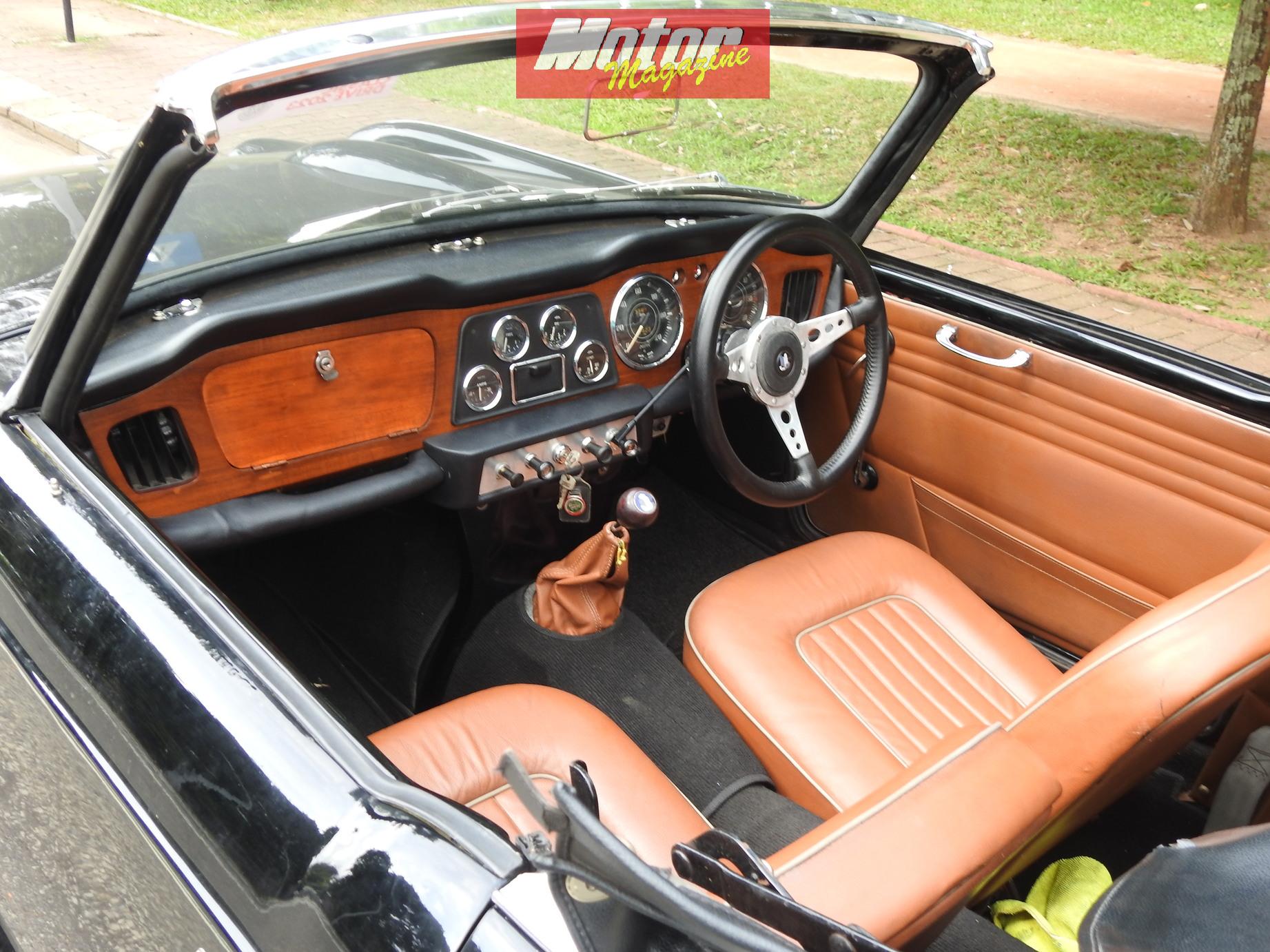
The owner’s driver who was in charge of the car for our photo-shoot was no doubt enjoying the admiring glances and appreciative smiles, as the rorty engine emitted a strident bark when under acceleration.
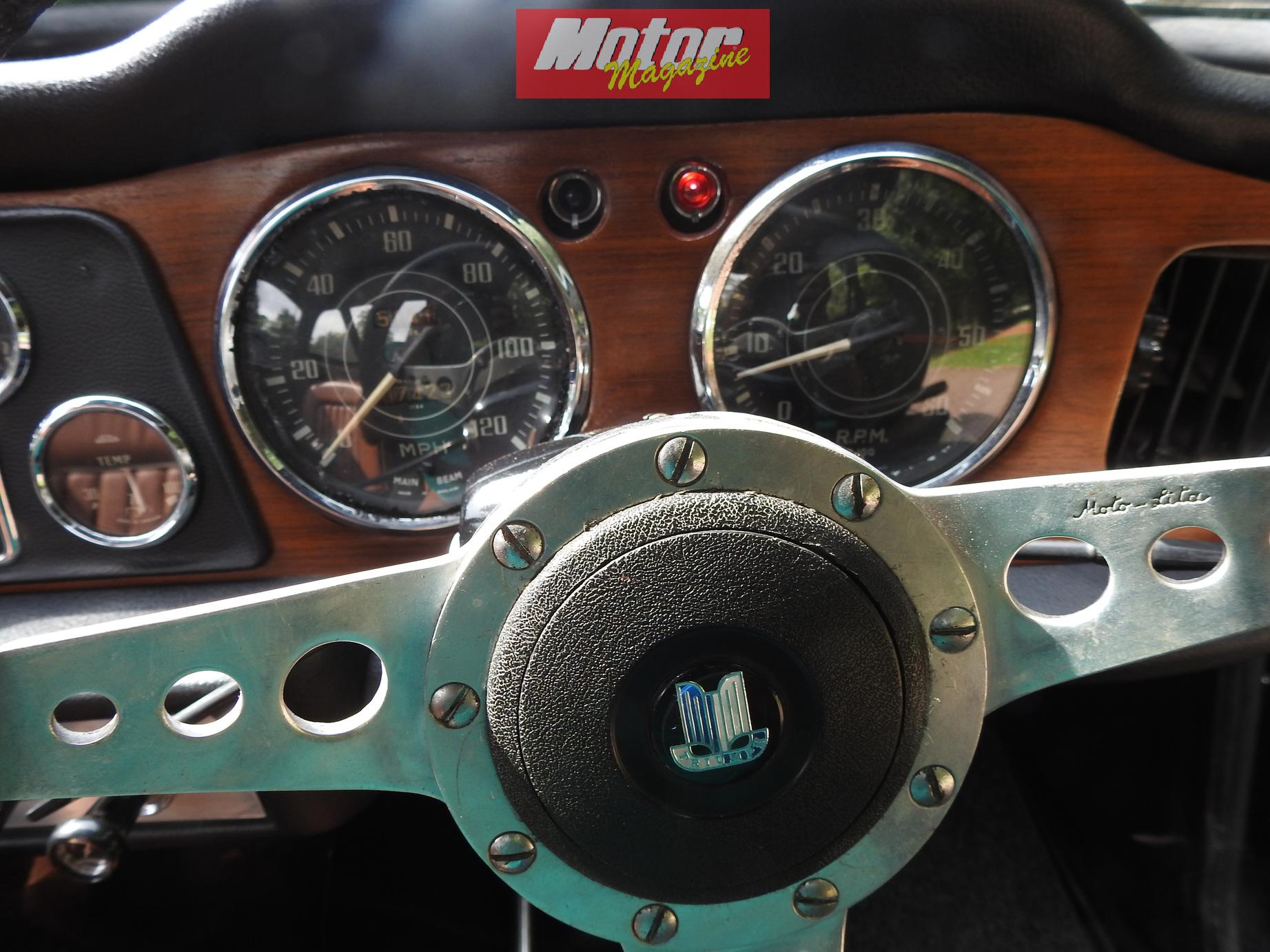
The interior is pure British roadster, with the bare essentials and little else. The driver receives a comprehensive instrument cluster with speed and revs taking the prominent spot ahead of the steering wheel, and auxiliary gauges nestled within the centre console. A few switches and an ashtray are all else that remains; there’s no climate control or Apple CarPlay-enabled touchscreen here!
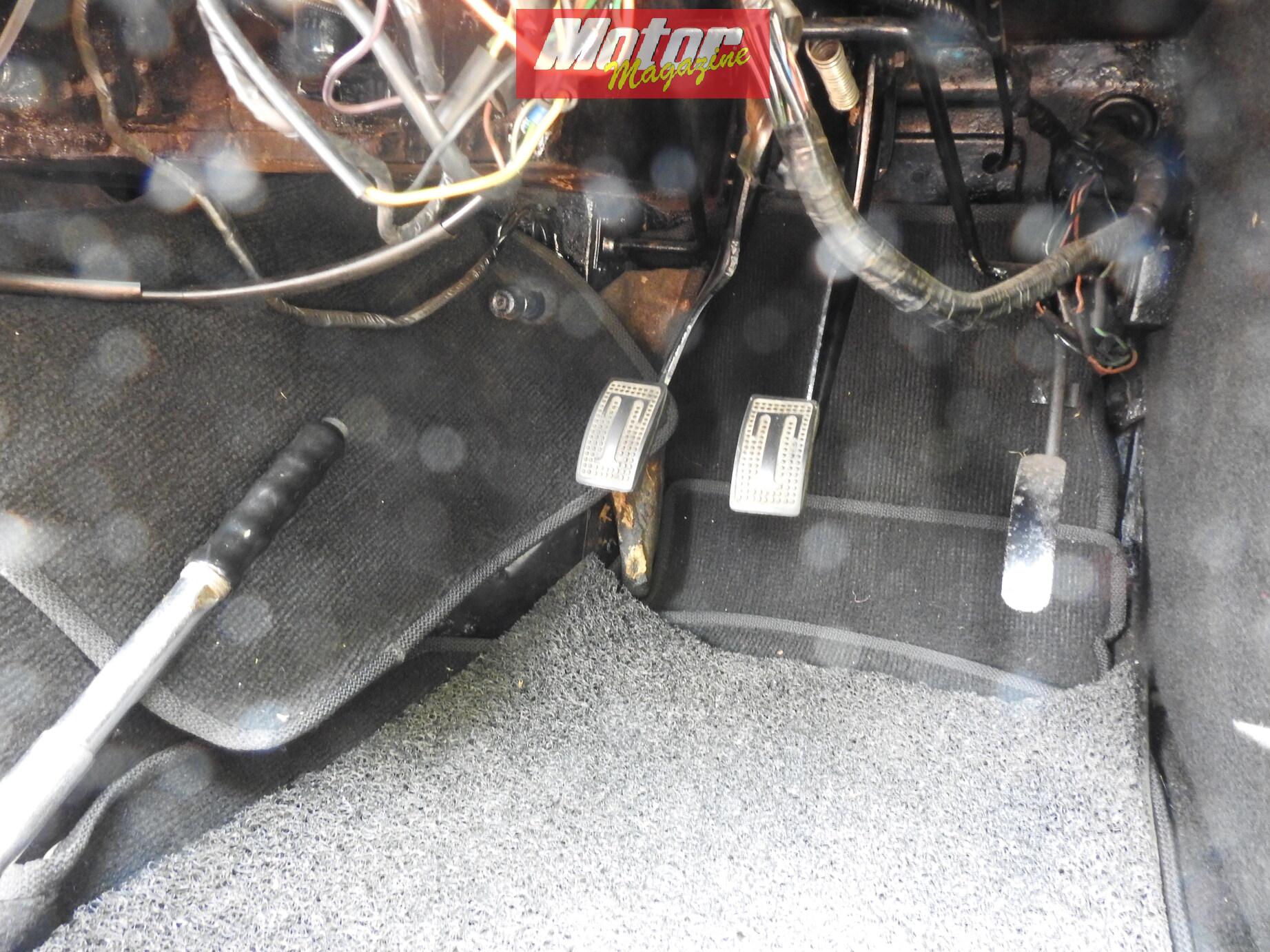
The driver tells me that the narrow footwell can make driving in footwear difficult; he prefers to drive the car ‘barefoot’, since it’s all too easy to accidentally hit the clutch and brake at the same time. A photograph of the footwell confirms this, showing that the clutch and brake are surprisingly close together, with the throttle sitting a relatively long distance away. Perhaps an aftermarket modification would solve this, and it’s something I’d definitely do if I owned this car. The purists would cry sacrilege, but having a larger foot size myself, I’d prefer the modification over an accidental application of the wrong pedal.
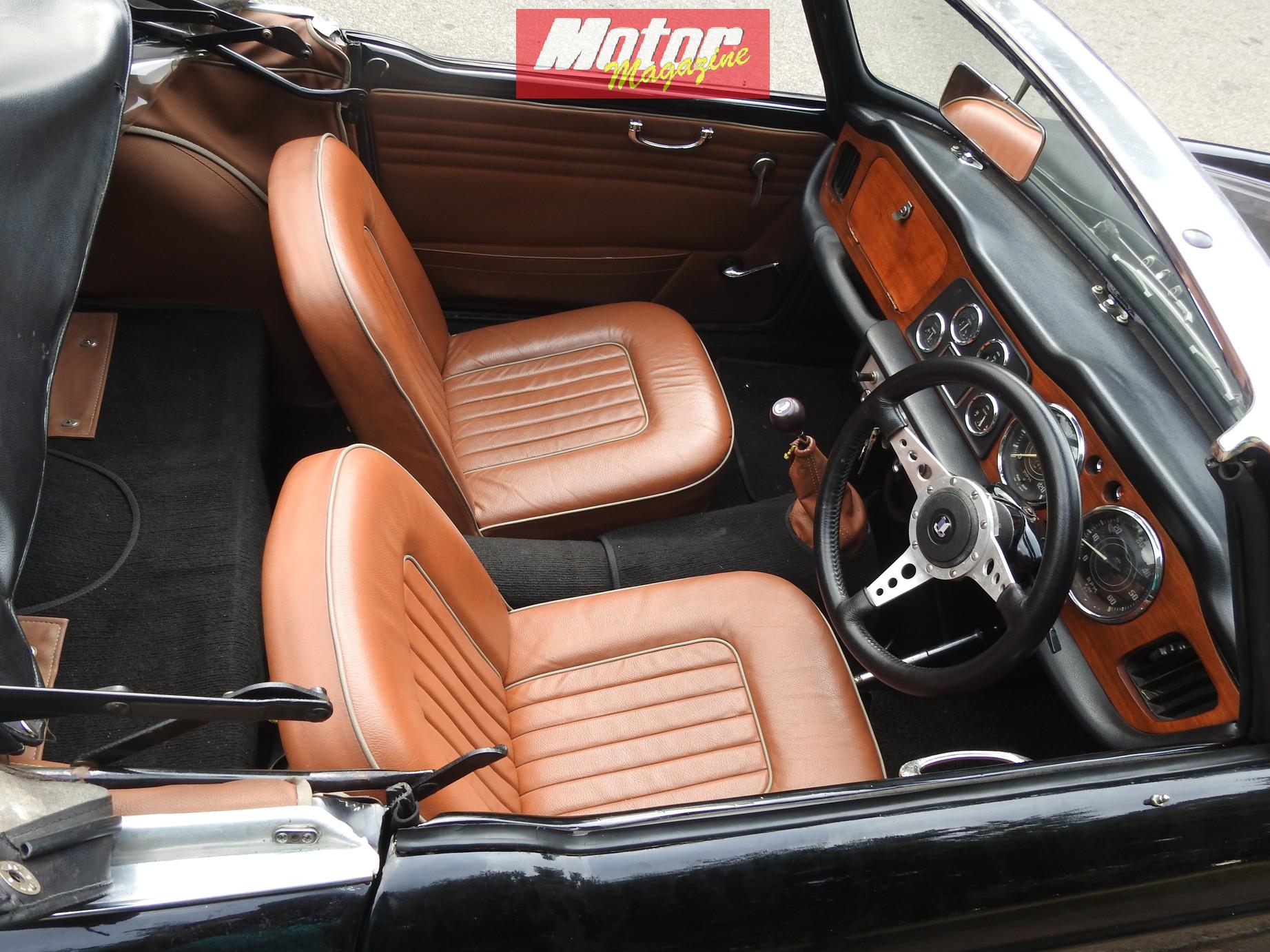
We get the convertible
top down for the photoshoot, and the simplicity of operation is perfectly showcased.
Just undo two catches and pop off two buttons at the front, and the
metal-framed canvas top goes down easily. There’s no faffing around with
complex mechanisms or tricky manoeuvres required. Granted, there are some gaps
between the top and the windscreen, hence it may not offer a completely dry
experience were we to experience a torrential downpour with strong winds, but
it would still be enough to get you home without drowning in the cabin en
route. Anyways, you’d be far too busy enjoying the rorty exhaust note and perky
performance that this car offers in bucket-loads.
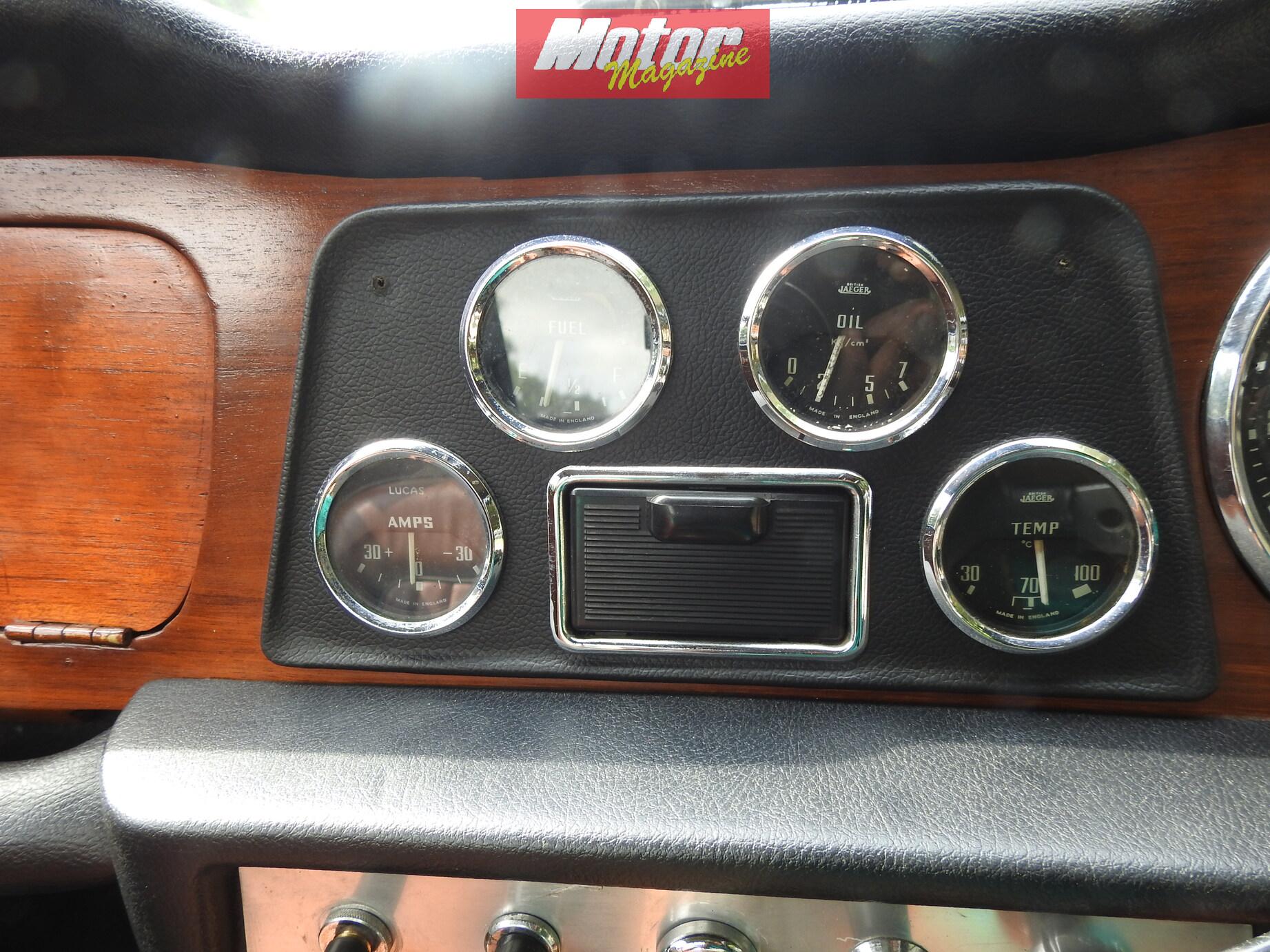
The predecessor to the TR4 was the TR3. In 1965, the TR4A with independent rear suspension superseded the TR4. Apart from the rear suspension, which used trailing arms and a differential bolted to the redesigned chassis frame and a number of small styling changes and refinements, the two models appear nearly identical.
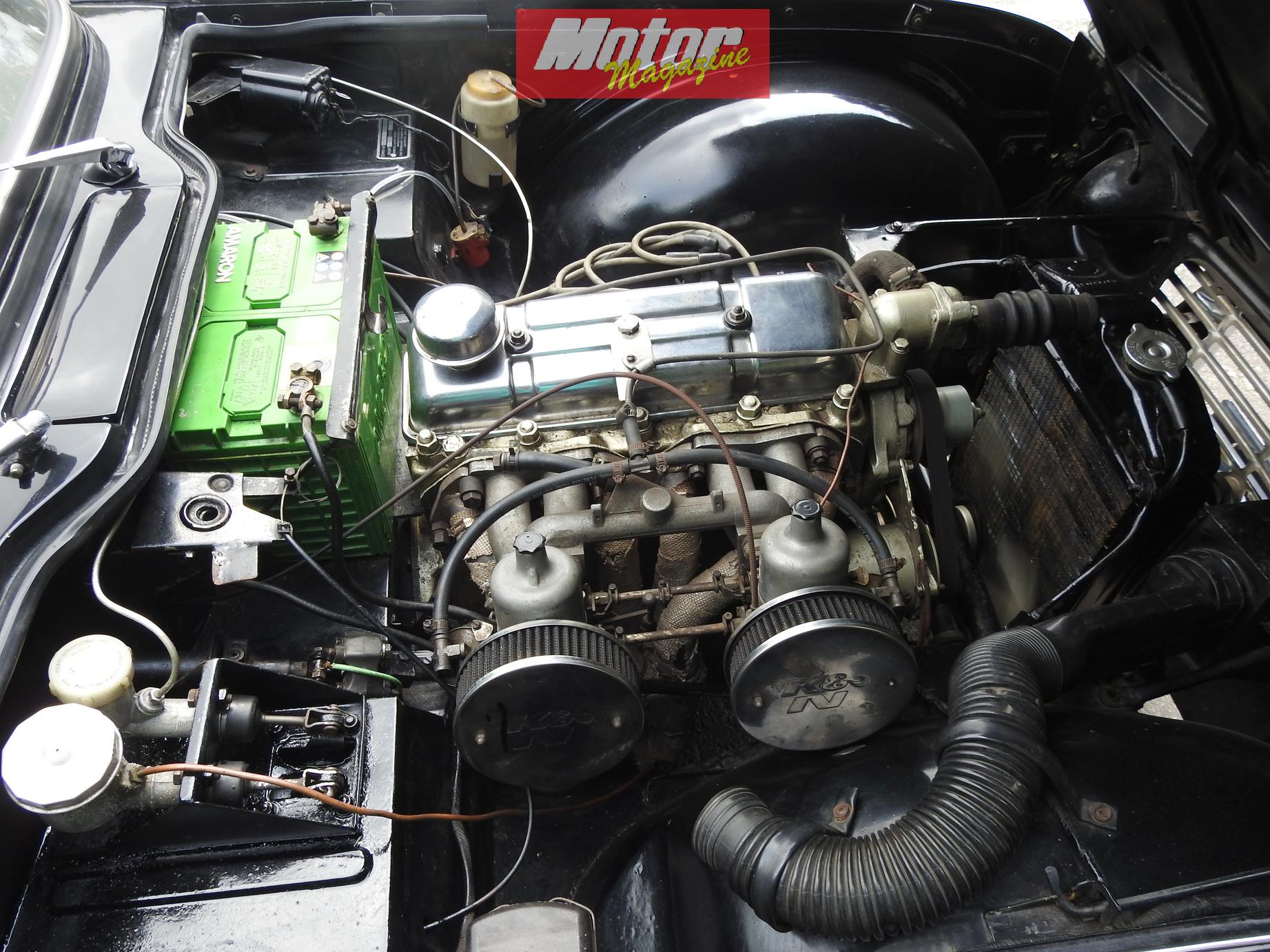
While several TR2’s and TR3’s were imported to Sri Lanka in the 1960’s – and most had time on the race tracks here as well – the TR4 featured here is thought to be the only car that arrived on the island. This was due to car import restrictions that came into force in the late 1960’s and continued right up to 1977.
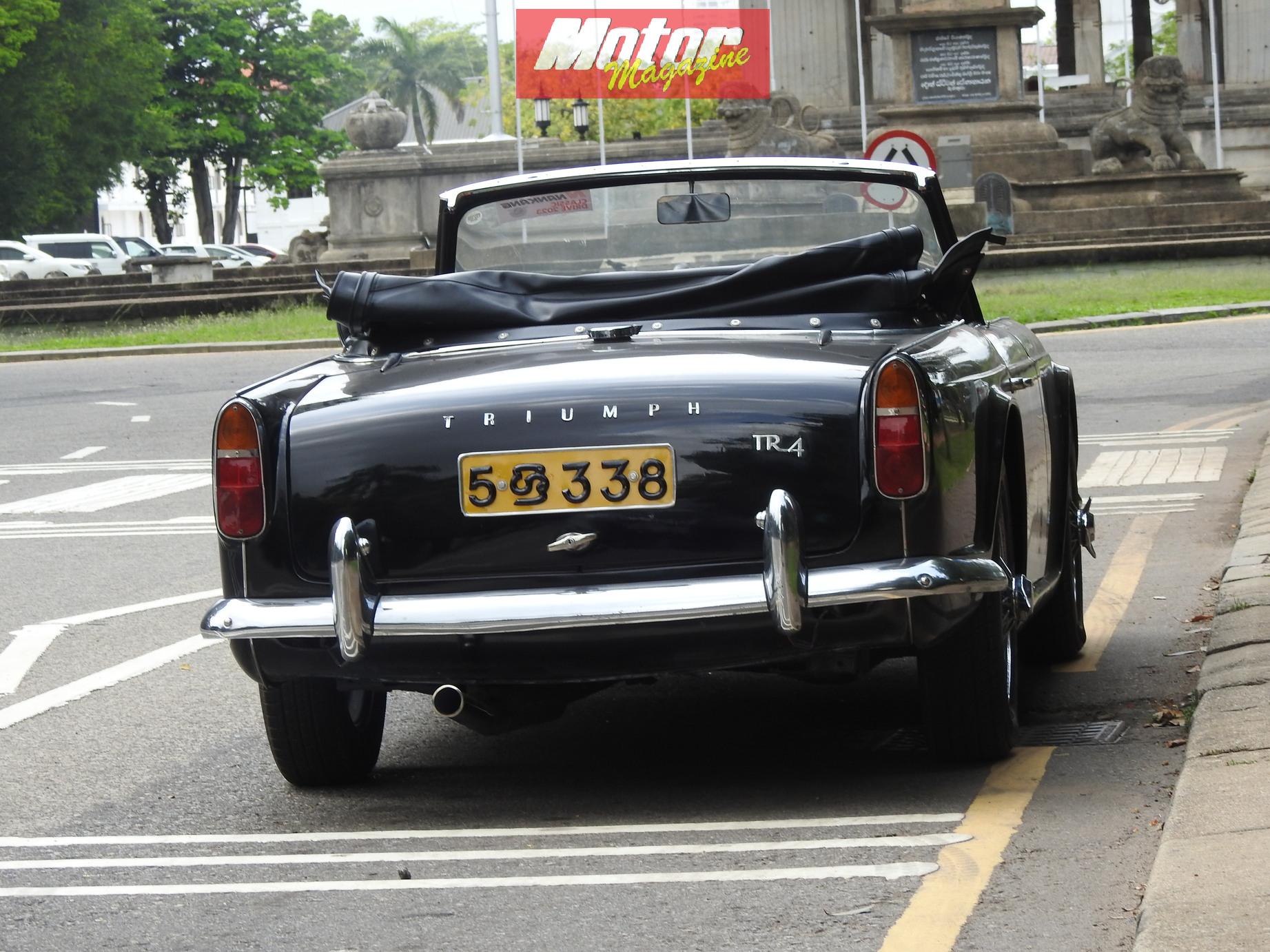
Thankfully the featured TR4 has been in the hands of sensible owners all its life and hence has survived well, and hopefully will also survive into the next several decades as well.





